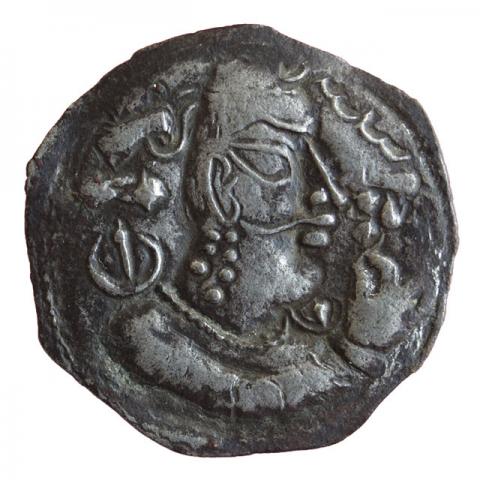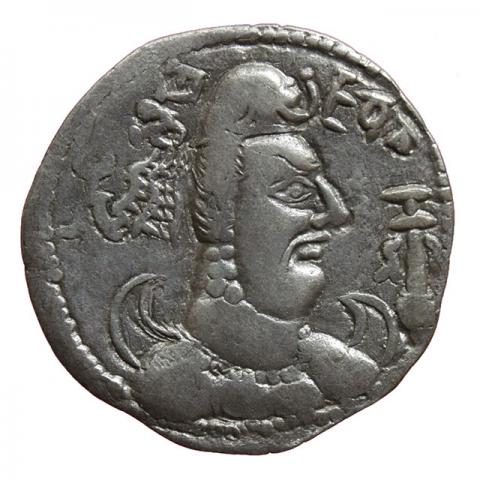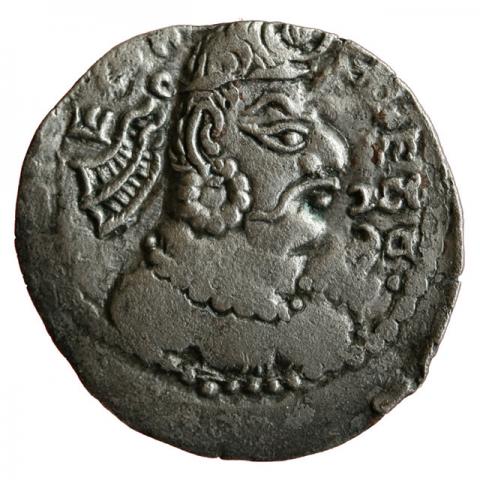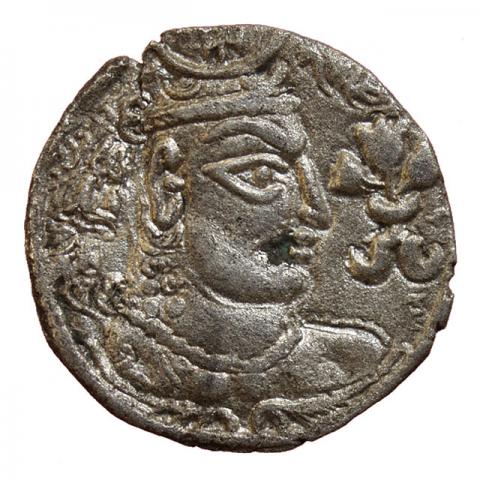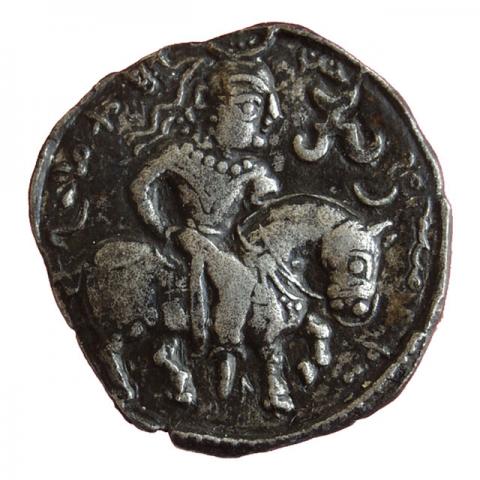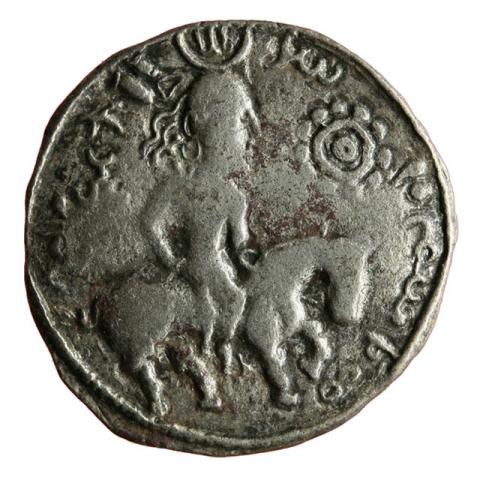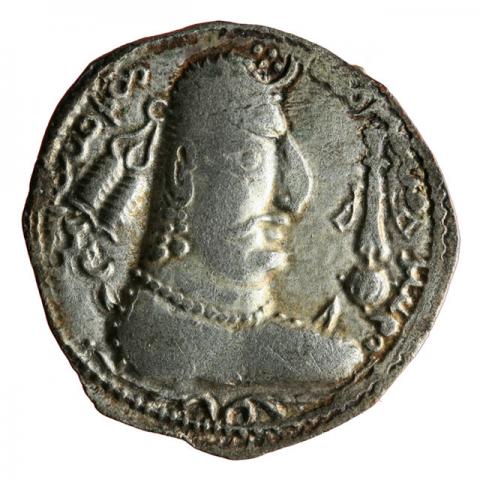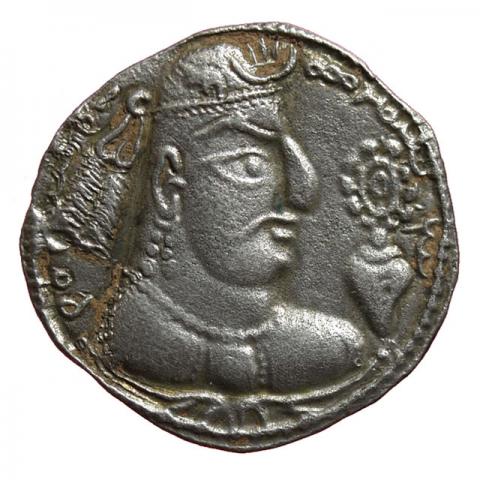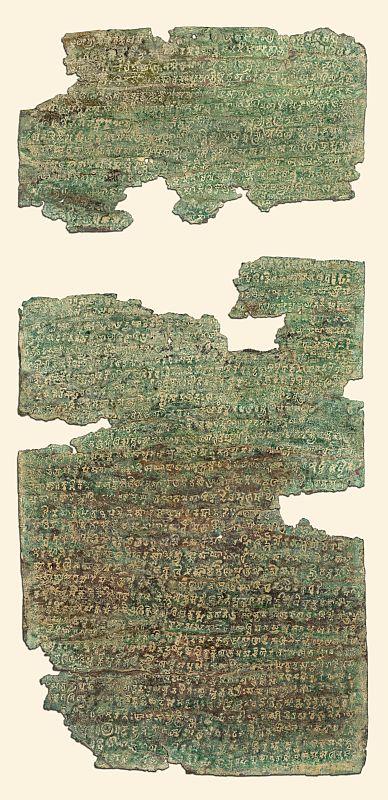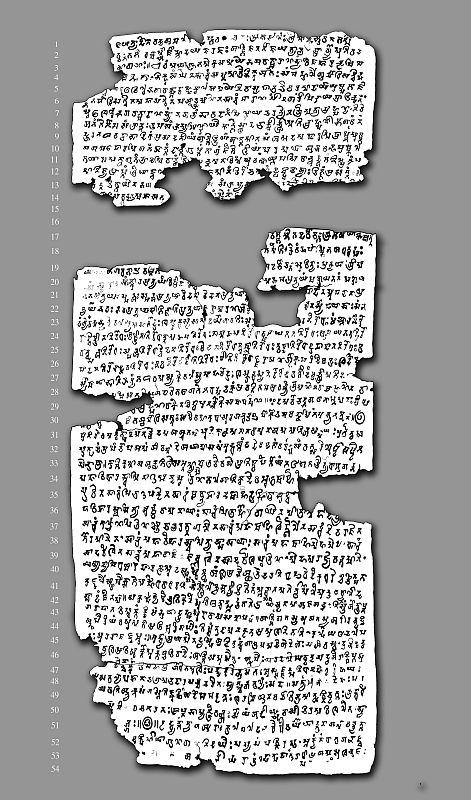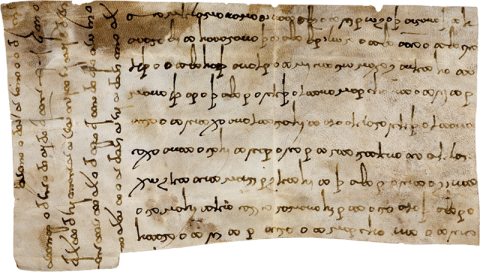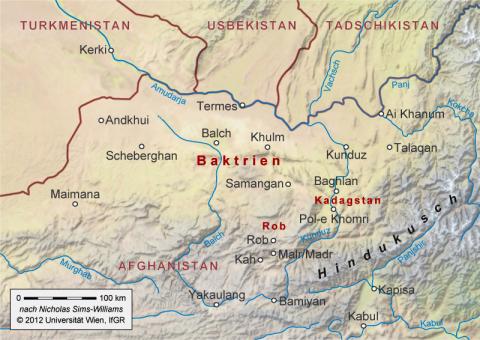
Toward the middle of the 5th century CE other Alkhan kings, who wrote their names (Mehama, Javukha/Zabocho, Lakhana, Aduman) in Bactrian or Brahmi on the coins, begin to appear on coinage. The typology changed only little: the obverse usually displays the bust of the king with the characteristic elongated skull and wearing a crown. The crown is composed of a diadem decorated with a crescent moon, pearls and wing ornaments. The points of the sickle moon are remarkable in that they emerge from behind the bust and underscore the astral character of kingship. In addition, one finds the already familiar clan symbol of the Alkhan and other symbols largely having to do with their religious perceptions. The bust of Mehama, who holds a flower in his extended right hand, represents an innovation (No. 3). Also the image of Javukha/Zabocho as a rider is new and was very likely borrowed from Indian Gupta coinage (Nos. 6, 8, 9). The reverse is often poorly struck: the Sasanian fire altar with both attendants is predominant, whereby the cakra (wheel) on the rider-drachm of Zabocho (Nr. 9) is a new addition. Aduman was the only Alkhan king beside Mehama (showcase 3; Nos. 9, 10) to have struck dinar with reduced gold content based on the Kidarite model (No. 10).
The question of mints is still entirely open. The few finds show that all the coinage mentioned were produced south of the Hindu Kush, in the geographic area stretching from Kabulistan and Zabulistan across Gandhara and Uddiyana and into eastern Punjab. The kings ruled, sometimes concurrently and as neighbors, in different areas where they struck their coins. In certain phases it seems that the dies for Khingila, Mehama, Javukha and Lakhana (showcase 9, No. 1) were even centrally produced or that the coins were struck at a common mint altogether. At certain points one can observe typologically coordinated and parallel production between Mehama und Javukha at two mints. In all, the findings show that the Alkhan state was controlled at times by four different rulers, who were on good terms with each other. The numismatic evidence is confirmed by a recently discovered inscription (Fig. A) dated to the year 492/3 CE which names the kings Khingila, Toramana (showcase 9), Mehama and Javukha as patrons of a Buddhist stupa. It is still debated whether the monument mentioned in this inscription was built near Qunduz in Tokharistan (North Afghanistan) or if it refers to a place in the so-called Salt Range in Punjab (Pakistan).
A. Copper scroll with Brahmi inscription (58 x 26 cm). (© Gudrun Melzer)
The inscription was commissioned probably in 493/94 CE during the reign of King Mehama, who had it executed in honor of the consecration of the Buddhist stupa in Sardiysa, in the region Talagan. Besides Mehama, the Alkhan kings Khingila, Toramana and Javukha are also listed as donors. It is still contested whether Talagan was a region in Bactria (east of the city Kunduz in North Afghanistan) or an area in Punjab, north of the Salt Range (Pakistan).
B. Letter (ink on leather) in the Bactrian language from "Meyam, King of the people of Kadag, the governor of the famous and prosperous King of Kings Peroz". (© Nicolas Sims-Williams)
The letter dated to the year 461/62 CE comes from the archive of the kingdom of Rob in Bactria (North Afghanistan). Meyam calls himself the King of Kadagstan (located in Bactria, northeast of Rob, in the region Baghlan) and is subordinate to the Sasanian king Peroz (457–484 CE).
C. Clay bulla of Meyam with the Bactrian inscription "Meiamo". (© Aman ur Rahman)
It is unclear whether the Meyam on the clay bulla (Fig. C) and the Meyam named in the letter (Fig. B) is the same as the one known from the copper inscription (Fig. A) and coins (Nos. 1–3). If so, then Meyam would have belonged to the Alkhan, beginning his career around 460 CE as governor of the Sasanian king Peroz in Bactria and would have ruled over a part of the Alkhan kingdom south of the Hindu Kush before 493/494 CE.
D. Map of Bactria with the kingdom of Rob, where an archive with over 150 Bactrian documents from the 4th to 8th century CE was found. (© Nicolas Sims-Williams)




